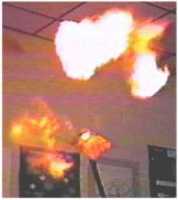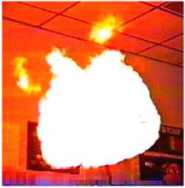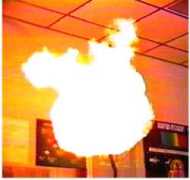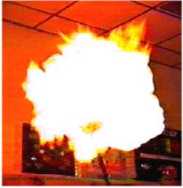 |
I also like to do a pre-mix balloon where hydrogen is put in the balloon
first and then oxygen is added as well. Upon ignition, this balloon will react much faster
because the hydrogen molecules are already exposed to their reaction partners. Watching
the videotape at regular speed, one sees a balloon followed by no balloon. Only when you
slow things down do you really see the action. The flame from a pre-mix balloon is very
quick, but it produces considerably more sound than the non-mixed balloon. |
 |





